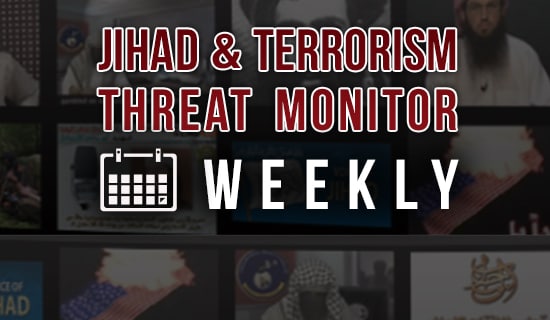On October 10, 2009, Taliban militants launched an attack on Pakistan Army headquarters in Rawalpindi, the twin city of Islamabad. In the ensuing battle by Pakistani commandos to end the 19-hour siege, 11 Pakistani soldiers, including a brigadier and a lieutenant colonel, were killed; also, eight militants were killed and one, Muhammad Aqeel, aka Dr. Usman, was captured alive and wounded.
Muhammad Aqeel is a former employee of the Pakistan Army's medical corps. His arrest has revealed two points: firstly, the links between militants and elements in the Pakistani military; and secondly, the involvement of "Punjabi Taliban" - various militant groups that grew in South Punjab under the patronage of the military. Muhammad Aqeel has told Pakistani officials that he belongs to the Punjabi Tehreek-e-Taliban (Movement of Pakistani Taliban). [1]
In the following article, Ayesha Siddiqa, prominent Pakistani columnist and author of Military Inc. - Inside Pakistan's Military Economy, Ayesha Siddiqa expressed concern that southern part of Pakistan's Punjab province may be falling into the hands of Taliban.
Following are some excerpts from the article: [2]
"The Threat of Talibanization, Which Seems To Be Growing Beyond the [North West] FrontierProvince... Is Present in South Punjab As Well"
"I will concentrate on the threat of Talibanization which seems to be growing beyond the [North West] Frontier Province and is present in south Punjab as well. It would not be surprising to see Swat's domino effect [after the Shari'a-for-peace deal] in other parts of the country in the grip of similar sociopolitical circumstances....
"It is tragic that those who were not voted into power by the ordinary Swatis are ruling Swat today. The ANP [the ruling secular Pashtun nationalist Awami National Party which signed the Shari'a deal] has surrendered its powers.
"[South Punjab] Has Remained a Favorite Breeding Ground for Numerous Militant Outfits - Especially Those Linked With the Kashmir Struggle"
"This model [the Shari'a agreement with the Taliban] could come to be replicated in other parts such as south Punjab. For many, this area, ranging from Mianwali to D.G. Khan and Bahawalpur, should be the least likely area for Talibanization. A closer look shows that it is not.
"First, it has remained a favorite breeding ground for numerous militant outfits, especially those linked with the Kashmir struggle. There was not much effort to mop up this area, besides superficial measures such as banning some outfits that nevertheless resurfaced under other names.
"Second, this part of Punjab is prominent in terms of large landownership and a feudal lifestyle. This is also an area where feudal institutions in terms of economic power merged with political and spiritual power.
"So, many prominent political families are not significant only due to their wealth and political power, but because they are connected to the shrines [Sufism, or Islamic mystic movements] as well. The gradual institutionalizing of the power of the shrine has strengthened them rather than giving some breathing space to ordinary people, some of whom are moving in the direction of rabid religious ideologies.
"So, it is lack of understanding of this background that leads people to show surprise that south Punjab, which was considered a hub of Barelvi Islam, is moving towards Deobandi and Wahhabi ideologies.
"A Lot of Barelvis have Shifted Toward Other Ideologies - And Are Part of the Jihad Industry Without Abandoning Their Original Ideology"
"A closer look, in fact, shows that a lot of Barelvis have shifted toward other ideologies, and are part of the jihad industry without abandoning their original ideology. The gap between the Barelvis and Deobandis has narrowed most peculiarly in south Punjab. Is it because of the hundreds of madrassas that mushroomed in this belt especially in the 1980s?
"The answer is yes and no. Yes because the new madrassas, which were different from the traditional ones in the area, introduced a more dramatic curriculum that nurtured in the students an appreciation of sectarian and ideological differences. Hence, the sectarian [Shi'ite versus Sunni] violence in the region, which predates the current shift, dates back to the 1980s and 1990s.
"The radicalization, including sectarian violence, represents an urge for social transformation because some prominent landowners in this area are Shi'ites as opposed to the underdogs, most of whom are Sunnis.
"The growing radicalization in southern Punjab shown up in the inability of the state to carry out land reforms and shift the socioeconomic and political power structure from a pre-capitalist society to a capitalist one will have its consequences in the years to come...."
"The Movement of the Youth Toward Jihad... is a Warped Form of Social Transformation"
"The movement of the youth toward jihad, hence, is a warped form of social transformation in which the dispossessed youngsters have suddenly found a source of empowerment. The promise of a better life in the hereafter in which they will get hoors [beautiful women of paradise] [and] a crown of jewels and have 70 individuals forgiven is something that they cannot expect in this life. Not to mention the monetary compensation their families get from militant outfits for their sacrifice.
"What is dangerous is that none of this is being voiced as part of social transformation. When a change takes place, the bulk of the people will remain sacrificial lambs, while others will replace the existing power elite as in Swat.
"Sadly, no one wants to talk about Punjab because the current leadership is too engrossed in its political pragmatism to touch militant outfits...."
Endnote:
[1] Roznama Jang, Pakistan, October 12, 2009.
[2] Dawn, Pakistan, May 1, 2009. The article has been edited slightly for clarity.








